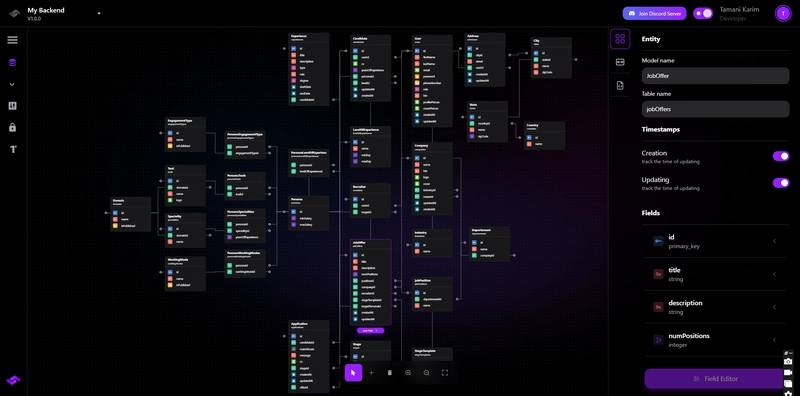Monitoring & Logging in DevOps: Tools and Best Practices
Introduction Imagine you are running a large-scale e-commerce website, and suddenly, your customers start facing slow page loads and failed transactions. Without proper monitoring and logging, diagnosing the issue could take hours—or even days—leading to significant revenue loss and a damaged reputation. This is where Monitoring & Logging in DevOps comes in as a game-changer. In DevOps, real-time observability is crucial to ensure smooth operations, quick incident response, and proactive problem resolution. By implementing the right monitoring and logging strategies, teams can track system performance, detect anomalies, and troubleshoot efficiently, minimizing downtime and enhancing reliability. Why Monitoring & Logging Matter in DevOps Proactive Issue Detection – Identify issues before they impact end users. Performance Optimization – Improve system efficiency with real-time data. Faster Troubleshooting – Debug and resolve issues quickly with structured logs. Compliance & Security – Ensure adherence to regulatory requirements. Enhanced Collaboration – Streamline communication between Dev, Ops, and Security teams. Step-by-Step Guide: Implementing Monitoring & Logging 1. Setting Up Monitoring with Prometheus & Grafana Step 1: Install Prometheus wget https://github.com/prometheus/prometheus/releases/download/v2.30.0/prometheus-2.30.0.linux-amd64.tar.gz tar -xvf prometheus-2.30.0.linux-amd64.tar.gz cd prometheus-2.30.0.linux-amd64/ ./prometheus --config.file=prometheus.yml Ensure Prometheus is running by accessing http://localhost:9090. Step 2: Install and Configure Grafana sudo apt-get install -y adduser libfontconfig1 wget https://dl.grafana.com/oss/release/grafana_8.3.3_amd64.deb sudo dpkg -i grafana_8.3.3_amd64.deb sudo systemctl start grafana-server sudo systemctl enable grafana-server Access Grafana at http://localhost:3000, default login: admin/admin. Step 3: Connect Prometheus to Grafana Go to Grafana dashboard → Configuration → Data Sources Add Prometheus URL: http://localhost:9090 Save & test the connection Common Issues & Fixes Error: Connection refused → Check if Prometheus & Grafana are running (systemctl status) No data in Grafana → Verify Prometheus scrape configuration in prometheus.yml 2. Implementing Centralized Logging with ELK Stack (Elasticsearch, Logstash, Kibana) Step 1: Install Elasticsearch wget https://artifacts.elastic.co/downloads/elasticsearch/elasticsearch-7.10.0-linux-x86_64.tar.gz tar -xzf elasticsearch-7.10.0-linux-x86_64.tar.gz cd elasticsearch-7.10.0/ ./bin/elasticsearch Step 2: Install Logstash for Log Processing wget https://artifacts.elastic.co/downloads/logstash/logstash-7.10.0-linux-x86_64.tar.gz tar -xzf logstash-7.10.0-linux-x86_64.tar.gz cd logstash-7.10.0/ ./bin/logstash -e 'input { stdin { } } output { stdout { } }' Step 3: Install Kibana for Log Visualization wget https://artifacts.elastic.co/downloads/kibana/kibana-7.10.0-linux-x86_64.tar.gz tar -xzf kibana-7.10.0-linux-x86_64.tar.gz cd kibana-7.10.0/ ./bin/kibana Access Kibana at http://localhost:5601 Common Issues & Fixes Elasticsearch not starting → Ensure Java is installed (java -version) Logstash failing to read logs → Check logstash.conf syntax Real-World Use Cases & Comparisons Tool Purpose Key Features Prometheus Monitoring Time-series data collection Grafana Data Visualization Custom dashboards, alerts Elasticsearch Log Storage Full-text search, scalability Logstash Log Processing Data transformation, pipeline Kibana Log Visualization Real-time dashboards, analytics Case Study: How Netflix Uses Monitoring & Logging Netflix uses an advanced monitoring setup with Prometheus and Grafana for real-time performance tracking, ensuring a seamless streaming experience. They also leverage the ELK Stack to analyze logs, helping them detect and resolve issues proactively. Interactive Elements Try this interactive Prometheus query Watch this video tutorial: Introduction to ELK Stack Poll: What’s your preferred monitoring tool? (Vote below!) SEO Optimization Meta Description: Learn the best Monitoring & Logging practices in DevOps with tools like Prometheus, Grafana, and ELK Stack. Step-by-step guide, use cases, and troubleshooting tips included. Primary Keywords: DevOps Monitoring, Logging in DevOps, Prometheus, Grafana, ELK Stack, Elasticsearch, Logstash, Kibana, Site Reliability Engineering. Conclusion Monitoring and logging are the backbone of a reliable DevOps environment. By integrating tools like Prometheus, Grafana, and ELK Stack, you can ensure seamless observability, quicker debugging, and improved system performance.

Introduction
Imagine you are running a large-scale e-commerce website, and suddenly, your customers start facing slow page loads and failed transactions. Without proper monitoring and logging, diagnosing the issue could take hours—or even days—leading to significant revenue loss and a damaged reputation. This is where Monitoring & Logging in DevOps comes in as a game-changer.
In DevOps, real-time observability is crucial to ensure smooth operations, quick incident response, and proactive problem resolution. By implementing the right monitoring and logging strategies, teams can track system performance, detect anomalies, and troubleshoot efficiently, minimizing downtime and enhancing reliability.
Why Monitoring & Logging Matter in DevOps
- Proactive Issue Detection – Identify issues before they impact end users.
- Performance Optimization – Improve system efficiency with real-time data.
- Faster Troubleshooting – Debug and resolve issues quickly with structured logs.
- Compliance & Security – Ensure adherence to regulatory requirements.
- Enhanced Collaboration – Streamline communication between Dev, Ops, and Security teams.
Step-by-Step Guide: Implementing Monitoring & Logging
1. Setting Up Monitoring with Prometheus & Grafana
Step 1: Install Prometheus
wget https://github.com/prometheus/prometheus/releases/download/v2.30.0/prometheus-2.30.0.linux-amd64.tar.gz
tar -xvf prometheus-2.30.0.linux-amd64.tar.gz
cd prometheus-2.30.0.linux-amd64/
./prometheus --config.file=prometheus.yml
Ensure Prometheus is running by accessing http://localhost:9090.
Step 2: Install and Configure Grafana
sudo apt-get install -y adduser libfontconfig1
wget https://dl.grafana.com/oss/release/grafana_8.3.3_amd64.deb
sudo dpkg -i grafana_8.3.3_amd64.deb
sudo systemctl start grafana-server
sudo systemctl enable grafana-server
Access Grafana at http://localhost:3000, default login: admin/admin.
Step 3: Connect Prometheus to Grafana
- Go to Grafana dashboard → Configuration → Data Sources
- Add Prometheus URL:
http://localhost:9090 - Save & test the connection
Common Issues & Fixes
-
Error: Connection refused → Check if Prometheus & Grafana are running (
systemctl status) -
No data in Grafana → Verify Prometheus scrape configuration in
prometheus.yml
2. Implementing Centralized Logging with ELK Stack (Elasticsearch, Logstash, Kibana)
Step 1: Install Elasticsearch
wget https://artifacts.elastic.co/downloads/elasticsearch/elasticsearch-7.10.0-linux-x86_64.tar.gz
tar -xzf elasticsearch-7.10.0-linux-x86_64.tar.gz
cd elasticsearch-7.10.0/
./bin/elasticsearch
Step 2: Install Logstash for Log Processing
wget https://artifacts.elastic.co/downloads/logstash/logstash-7.10.0-linux-x86_64.tar.gz
tar -xzf logstash-7.10.0-linux-x86_64.tar.gz
cd logstash-7.10.0/
./bin/logstash -e 'input { stdin { } } output { stdout { } }'
Step 3: Install Kibana for Log Visualization
wget https://artifacts.elastic.co/downloads/kibana/kibana-7.10.0-linux-x86_64.tar.gz
tar -xzf kibana-7.10.0-linux-x86_64.tar.gz
cd kibana-7.10.0/
./bin/kibana
Access Kibana at http://localhost:5601
Common Issues & Fixes
-
Elasticsearch not starting → Ensure Java is installed (
java -version) -
Logstash failing to read logs → Check
logstash.confsyntax
Real-World Use Cases & Comparisons
| Tool | Purpose | Key Features |
|---|---|---|
| Prometheus | Monitoring | Time-series data collection |
| Grafana | Data Visualization | Custom dashboards, alerts |
| Elasticsearch | Log Storage | Full-text search, scalability |
| Logstash | Log Processing | Data transformation, pipeline |
| Kibana | Log Visualization | Real-time dashboards, analytics |
Case Study: How Netflix Uses Monitoring & Logging
Netflix uses an advanced monitoring setup with Prometheus and Grafana for real-time performance tracking, ensuring a seamless streaming experience. They also leverage the ELK Stack to analyze logs, helping them detect and resolve issues proactively.
Interactive Elements
- Try this interactive Prometheus query
- Watch this video tutorial: Introduction to ELK Stack
- Poll: What’s your preferred monitoring tool? (Vote below!)
SEO Optimization
Meta Description: Learn the best Monitoring & Logging practices in DevOps with tools like Prometheus, Grafana, and ELK Stack. Step-by-step guide, use cases, and troubleshooting tips included.
Primary Keywords: DevOps Monitoring, Logging in DevOps, Prometheus, Grafana, ELK Stack, Elasticsearch, Logstash, Kibana, Site Reliability Engineering.
Conclusion
Monitoring and logging are the backbone of a reliable DevOps environment. By integrating tools like Prometheus, Grafana, and ELK Stack, you can ensure seamless observability, quicker debugging, and improved system performance.












































































































































































![[The AI Show Episode 142]: ChatGPT’s New Image Generator, Studio Ghibli Craze and Backlash, Gemini 2.5, OpenAI Academy, 4o Updates, Vibe Marketing & xAI Acquires X](https://www.marketingaiinstitute.com/hubfs/ep%20142%20cover.png)


























































































































![[FREE EBOOKS] The Kubernetes Bible, The Ultimate Linux Shell Scripting Guide & Four More Best Selling Titles](https://www.javacodegeeks.com/wp-content/uploads/2012/12/jcg-logo.jpg)



![From drop-out to software architect with Jason Lengstorf [Podcast #167]](https://cdn.hashnode.com/res/hashnode/image/upload/v1743796461357/f3d19cd7-e6f5-4d7c-8bfc-eb974bc8da68.png?#)







































































































.png?#)





.jpg?#)






























_Christophe_Coat_Alamy.jpg?#)







































































































![Rapidus in Talks With Apple as It Accelerates Toward 2nm Chip Production [Report]](https://www.iclarified.com/images/news/96937/96937/96937-640.jpg)















































































































































